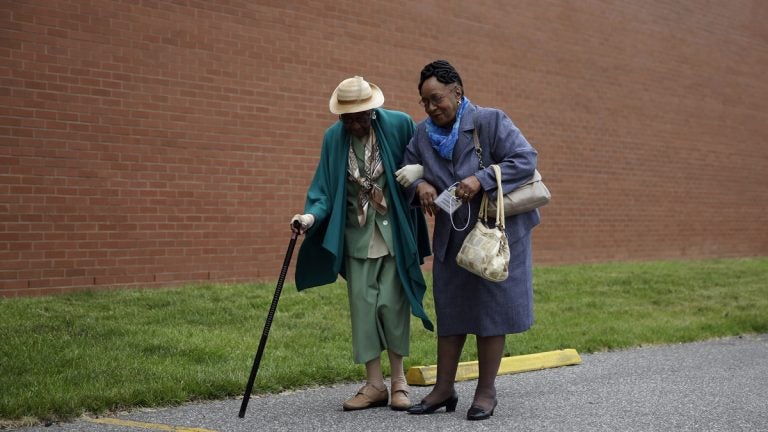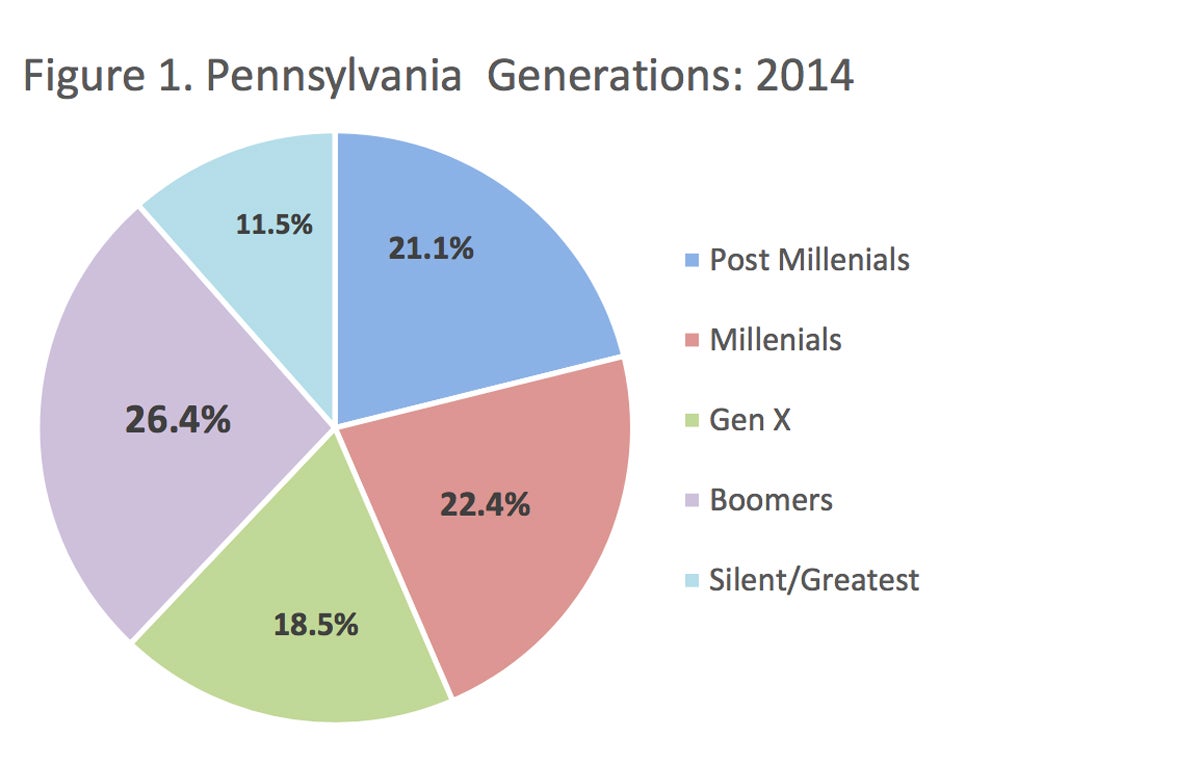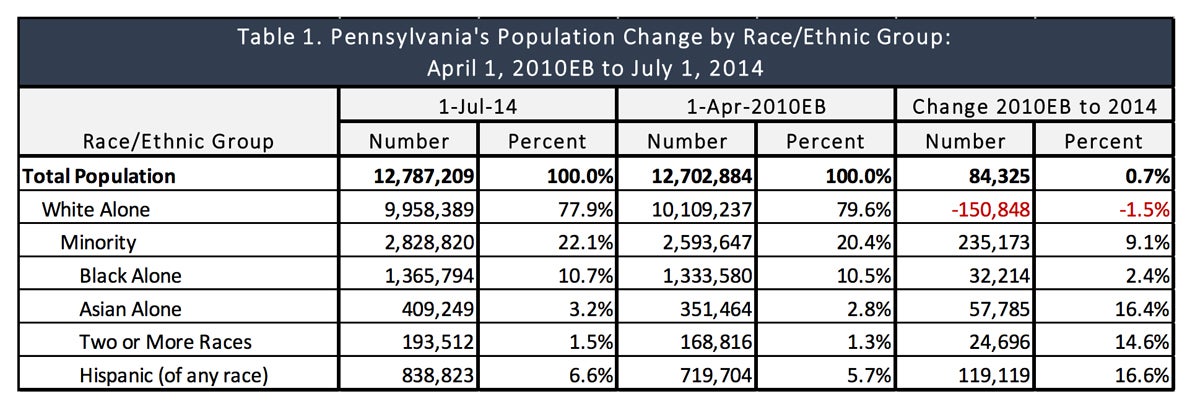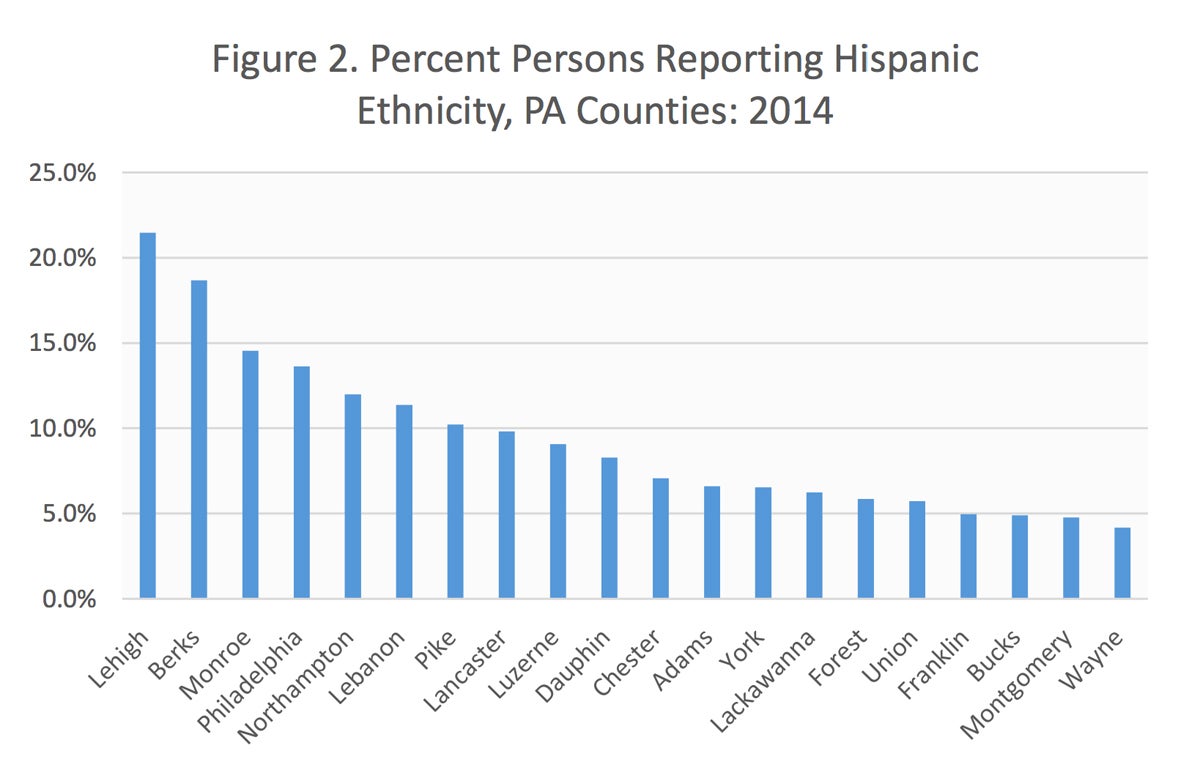Pennsylvania’s population becoming older, more diverse

Gloria Jamison, right, escorts her mother, Isabella Jamison, who was born on Feb. 14, 1914, to Philadelphia's 15th Annual Centenarian Celebration at a union hall on Thursday, May 21, 2015, in Philadelphia. (AP Photo/Matt Slocum)
Pennsylvania’s older and minority populations continue to grow, according to a new report released by Penn State Data Center.
The number of Pennsylvania residents 65 and older reached more than 2.1 million in 2014 — that’s one in six people — continuing the trend of the state’s increasing older population.
Since the 2010 Census, Pennsylvania’s 65+ population has grown by 8.9 percent.
Over the next 20 years, the Pennsylvania Data Center projects that cohort group will continue to grow and peak to more than 3.2 million residents, making up nearly a quarter of the state’s total population by 2035. This means Pennsylvania cities and communities need to plan for potential challenges that come along with an aging population — like access to affordable housing and increases in public health costs.
The driver of Pennsylvania’s increasing older population is the aging baby-boom generation, defined as a person being born between 1946 and 1964, ages 50-69. The boomers now make up the largest portion of Pennsylvania’s population, more than one in four residents in 2014.
Following the boomers are the millenials, defined as a person 18 to 34 years old. They they make up about 22 percent of the state’s population. The post-millenials, under 18, make up about 22 percent also. Generation X, ages 35 to 49, account for about 19 percent, and the silent/greatest generation, ages 70 and older, make up about 12 percent of the state’s population.

Source: Penn State Data Center
Changing Communities
Pennsylvania’s population is also becoming more diverse, with minority groups growing since 2010 and making up about 22 percent of the state’s total population.
The fastest growing minority group in the state is the Hispanic population, making up slightly more than half of the total growth. The number of Hispanic residents increased by about 119,100 residents, a 16.6 percent growth, since 2010.
Also showing strong growth is Pennsylvania’s Asian population with a 16.4 percent growth rate, and residents who are two or more races, with a 14.6 percent increase.

Source: Penn State Data Center
While Pennsylvania’s older population seems to be concentrated in the western and north central parts of the state, the Hispanic population is growing in the eastern parts of the state.
Lehigh County has the largest Hispanic population at about 22 percent, followed by Berks County with about 19 percent. Monroe, Philadelphia, Northampton, Lebanon, and Pike counties have Hispanic populations greater than 10 percent.

Source: Penn State Data Center
The overall minority population grew in all counties across the Commonwealth, except one — Cambria county.
WHYY is your source for fact-based, in-depth journalism and information. As a nonprofit organization, we rely on financial support from readers like you. Please give today.



